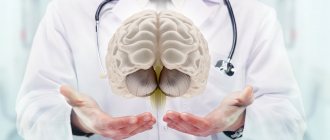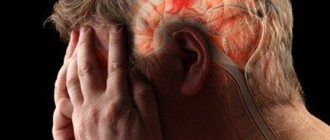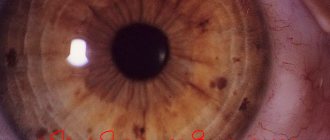The prevalence of cysticercosis in the world is similar to that of taeniasis (pork tapeworm). The geographical range includes territories with widely developed livestock farming. Cysticercosis draws the attention of specialists due to the severity of its course in humans with the possibility of damage to vital organs and systems, the low effectiveness of specific therapy and mortality. It is known that cysticercosis can cause the development of neurological diseases, including epilepsy, common in South America, Africa, and Asia.
Cysticercosis is a human disease of parasitic etiology, caused by the larvae of the pork tapeworm - cysticerci or Finns (Cysticercus cellulosae), capable of settling and parasitizing in various organs (brain, spinal cord, muscle tissue, organs of vision, bone tissue and others), as well as difficult to treat. If this disease occurs, humans are the intermediate host of pork tapeworm.
Cysticerci (larvae)
The geographical prevalence of cysticercosis is almost the same as with taeniasis. These are South and Central America, Africa, India, China, Ukraine, Belarus, Georgia, Siberia.
What is cysticercosis
Cysticercosis is a condition where a cyst (an immature form of the pork tapeworm) migrates from the intestine to other organs, particularly the muscles and brain of a person, causing neurocysticercosis (damage to the nervous system).
In addition to the muscles and brain, pork tapeworm larvae can parasitize the eyes, liver and subcutaneous tissues, as well as other internal organs.
This disease is very relevant to the United States due to the influx of migrants from endemic regions. However, many people are still unaware of this serious and potentially life-threatening condition.
Although pork tapeworm is the main cause of cysticercosis, other worms can also cause it.
How is the disease treated?
Treatment methods for cysticercosis depend on how severely the body is affected by parasites, what the individual symptoms of the development of this disease are, as well as on the location of the infestation. Treatment must be prescribed by the attending physician; carrying out treatment on your own can be not only useless, but also dangerous for human health. Most often, therapy includes drugs that help eliminate parasites from the body, eliminate the patient’s convulsive state, and corticosteroids are also used. If necessary, the patient undergoes surgery to remove the affected area or cysts.
For treatment, such common anti-helminth drugs as Albendazole can be used; this drug effectively destroys helminths. The medicine Praziquantel can also be used; this remedy also works well against cysticerci, but it is worth remembering that the tablets can cause serious allergic reactions. Only the attending physician can prescribe treatment, who knows the full picture of the disease, and also takes into account the individual characteristics of the body and possible reactions to medications.
Corticosteroids are usually used in conjunction with deworming medications; in extremely rare cases, deworming tablets may be replaced with such medications. It is worth noting that corticosteroids do not help get rid of helminths at all; these drugs only relieve the inflammatory process.
It is necessary to take medications against seizures if they occur in a patient; most often, this symptom is observed with cysticercosis of the brain. Surgical treatment is necessary for cysticercosis of the eyes, as well as for damage to the brain and muscles.
Difference between taeniasis and cysticercosis
Taeniasis (lat. Taeniasis) is a common parasitic disease caused by tapeworms of the genus Taenina: T. Solium, in particular pork, bovine and Asian tapeworms. Taeniasis is the result of eating poorly cooked meat contaminated with tapeworm eggs.
The tapeworm that causes taeniasis may also be responsible for cysticercosis. However, cysticercosis is not caused by eating poorly cooked meat.
It is a consequence of taeniasis, resulting from the entry of eggs into the human body, which subsequently develop to the larval stage and begin to move to other human organs.
Life cycle
Understanding the pathophysiology of cysticercosis plays an important role in preventing the disease and recognizing early symptoms. It is equally important to know the life cycle of the tapeworm and how the parasite leads to disease.
The life cycle of the pork tapeworm, which causes taeniasis and cysticercosis, will look like this:
- Pigs eat food contaminated with feces that contain tapeworm eggs or proglottids (segments of an adult tapeworm).
- The parasite then progresses to the oncosphere (six-hooked larva) stage, which then penetrates the intestinal wall and takes refuge in the muscles of the pig.
- After which the oncospheres mature to the stage of cysticerci (larval cysts).
- Cysticerci then enter the body of people when they eat poorly processed meat.
- Cysticerci continue to live in the human intestine until they completely transform into adult tapeworms.
- Adults lay eggs, which are released into the external environment along with human feces.
In this case, pigs are the intermediate hosts, and humans are the final hosts, and cysticercosis will develop only when the pork tapeworm cyst begins to move from the intestines to other organs.
Types and signs
There are several types of the disease, depending on the location of the cyst in the body. They all have different symptoms and manifestations. In 82% of infected people, brain damage is observed, and in 9% of cases, the helminth larva chooses the eyeball as its habitat. The parasite can also end up in the parenchyma of internal organs, under the skin and in fatty tissue.
CNS
Diagnosed in animals and humans with equal frequency. The mortality rate during infection reaches high rates, since it is not always possible to determine the source of unpleasant symptoms in time and begin treatment.
Cysticercosis can affect the brain
Helminth larvae enter the central nervous system through the digestive tract. In the stomach, the shell of the eggs bursts and the worm penetrates through the walls of the organ into the bloodstream. Most often the larvae are localized:
- in the cerebral hemispheres;
- in the ventricular system;
- at the base of the medulla oblongata.
When several eggs enter the body, mixed subtypes of cerebral cysticercosis can form, when helminth larvae are found in several parts of the brain at once.
Manifestations of this type of disease depend on the location of the cyst:
| Location of the cysticercus | Symptoms |
| Large hemispheres | Severe, long-lasting migraines, repeated uncontrollable vomiting, dizziness. 80% of cases have epileptic seizures. |
| Ventricles | Cephalgia, vomiting, worsening when trying to change body position. Symptoms tend to constantly increase. |
| Base | Paroxysmal pain in the back of the head and neck, severe dizziness, inability to maintain balance and navigate in space. The perception of taste changes or there is constant discomfort in the mouth. The sensitivity of the limbs is partially lost. 20% of patients have mental disorders. |
Doctors call the mixed form the most dangerous, since in this case the symptom complex is expanded, which complicates diagnosis.
Internal organs
Experts call this form tenuikol. The following are negatively affected by the larva:
- liver;
- lungs;
- heart.
Cysticercosis can develop in internal organs
In some cases, helminths choose visceral fat as their habitat. They can be located both directly in the parenchyma of organs and on the serous integument. In the second case, the prognosis is more favorable.
This type of helminthiasis is especially dangerous for young animals, as it is fatal in 90% of cases. The person also experiences life-threatening changes.
The symptomatic picture depends on the location of the cysticercus:
| Affected organ | Parenchyma | Serous membranes |
| Liver | Increased body temperature, pain in the hypochondrium, refusal to eat, abnormal bowel movements, severe weight loss. People experience yellowness of the skin. | Pain and pressure in the hypochondrium, weight loss. In some cases, stool disturbances and nausea are observed. |
| Lungs | Paroxysmal cough with sputum, sometimes with blood, fever, shortness of breath or suffocation. | Pressing chest pain, dry cough. When located in close proximity to the heart, changes in rhythm and cardiac colic may be observed. |
| Heart | Acute pain, arrhythmia, tachycardia, other disorders. The condition is accompanied by signs of heart failure. | Arrhythmia, cardiac colic, increased body temperature. |
The symptomatic picture when cysticerci are located in visceral fat is blurry, sometimes absent. The severity of the symptoms depends on the size of the neoplasm and its position relative to the abdominal organs.
If the pathology is detected in a timely manner, the prognosis is favorable.
Eyeballs
It ranks second in prevalence after damage to the central nervous system. Depending on the location of the helminth, infected people experience the following symptoms:
- sensation of a foreign object (worries when the iris or membrane is damaged);
- feeling of bloating;
- pain in the eye socket;
- partial or complete loss of vision.
The disease affects the visual analyzer
The main danger posed by ocular cysticercosis is blindness. This consequence often occurs even if the parasite is detected and eliminated in a timely manner.
Skin and subcutaneous tissue
This form of the disease is diagnosed less frequently than others. Experts call it the safest for humans and animals, but this does not mean that the pathology can be ignored.
Main features:
- mobile neoplasms under the skin, the diameter of which in humans reaches 2 cm, and in animals can reach up to 5-7 cm;
- itching and burning over the tumor;
- crawling sensation.
Cysticercosis of the skin causes itching
Most often, the lesion is localized in the shoulder and chest area. In animals, the bumps may be located along the spine and on the neck.
Brain damage
Cysticerci can develop in a number of different tissues and organs, but parasitism of cysticerci in the brain is especially dangerous. This disease is known as neurocysticercosis.
Typically, the immune system attacks these foreign organisms. However, cysticerci are able to disable the immune system and successfully parasitize brain tissue.
However, over time, the body's immune system begins to react to the vital activity of the parasites, which leads to inflammation of the brain tissue. At this stage, the symptoms of cysticercosis begin to actively appear.
What is this disease?
Cysticercosis is a parasitic human disease caused by the penetration of cysticercus into the body. In this case, the victim acts as an intermediate facultative host of the helminth.
This disease is recorded extremely rarely, no more than 2-4% of all infections. It has no gender, but is common only among the adult population. There is no exact data on the progression of the pathology.
Cysticercosis is recorded in no more than 2-4% of all infections
The disease is recorded exclusively in areas where taeniasis predominates. Pathology is considered the most common cause of epilepsy in residents of Central and South America. In the countries of the former USSR, the disease was most widespread in the western regions of Ukraine.
Thin-necked cysticercosis enters the body in the form of eggs. Under the influence of pepsin, its shell is destroyed, and full-fledged embryos are found in the digestive system, which begin active maturation and reproduction.
They enter the blood vessels and spread throughout the body. In most cases, the negative effect is on the nervous system. The organs of vision and muscles are less affected. Infection occurs through dirty hands and consumption of unpeeled fruits and vegetables.
Diagnosis and treatment
It is important that the doctor makes an accurate diagnosis.
This facilitates treatment and will also help rule out other diseases that have similar symptoms. Blood tests can indicate infection, but are usually not completely reliable. The best option to identify the disease would be to undergo an MRI or CT scan.
Cysticercosis does not always require treatment, for example in asymptomatic cases. However, when symptoms occur, immediate treatment is required. Treatment should focus on eliminating the parasite and monitoring health conditions.
This is achieved using one or more of the following drugs:
- Albendazole and praziquantel (antiparasitic drugs).
- Corticosteroids to reduce inflammation.
- Anticonvulsants.
Surgery may be required in some cases when patients' bodies do not respond to treatment. It may also be needed for hydrocephalus (a buildup of fluid in the brain).
How does infection occur?
It's no secret that there are many people among us who prefer meat. Kebabs, chops, cutlets are just a small part of the dishes that a modern person can afford. And this is the easiest way to become infected with cysticercosis. Why? Let's try to answer the question posed.
So how is the infection transmitted? Most often the culprits are:
- unwashed hands;
- insufficient heat treatment of pork and wild boar meat;
- dirty vegetables and greens;
- untreated drinking water.
In this way, a person will never develop cysticercosis. It is enough to follow the simplest rules. Namely, monitor hygiene, pay attention to what is included in the family’s diet and thoroughly wash vegetables and herbs even from your own garden plot.
According to sanitary and epidemiological inspection workers, during an external inspection of meat products, the larvae of the parasite are visible to the naked eye.
class Nematoda
family Filarioidea
It is possible to defeat parasites!
Antiparasitic Complex® - Reliable and safe removal of parasites in 21 days!
- The composition includes only natural ingredients;
- Does not cause side effects;
- Absolutely safe;
- Protects the liver, heart, lungs, stomach, skin from parasites;
- Removes waste products of parasites from the body.
- Effectively destroys most types of helminths in 21 days.
There is now a preferential program for free packaging. Read expert opinion.
Interesting to know:
Measures taken by doctors in the fight against cisterns
- Drug therapy. This type of treatment is the most common. Then the doctor prescribes antiparasitic drugs, such as Mebendazole, Albendazole, Vermox, Praziquantel, etc. To get rid of parasites, you will need to treat three times, with a break of 20-30 days. At the end of the treatment course, the patient will need to be tested again. If remaining pathogens are detected, the person will be prescribed drug therapy again.
- Surgery is used if the person’s vital centers are not affected and the lesion is clearly visible. To complement the treatment, the patient is prescribed corticosteroids that support the body, anthelmintics and other medications: Dexamethasone, Prednisolone.
- Considering that the vital activity of parasites provokes intoxication of the body, a person will need to remove toxins from the body. For this purpose, Zyrtec, Suprastin or other drugs related to antihistamines are used.
The longest treatment is required as a result of damage to internal organs. To shorten the duration of therapy, you should follow your doctor’s recommendations and take medications at the time indicated by your doctor.
Bibliography
- Centers for Disease Control and Prevention. Brucellosis. Parasites. Link
- Corbel MJ Parasitic diseases // World Health Organization. Link
- Young EJ Best matches for intestinal parasites // Clinical Infectious Diseases. — 1995. Vol. 21. - P. 283-290. Link
- Yushchuk N.D., Vengerov Yu.A. Infectious diseases: textbook. — 2nd edition. - M.: Medicine, 2003. - 544 p.
- Prevalence of parasitic diseases among the population, 2009 / Kokolova L. M., Reshetnikov A. D., Platonov T. A., Verkhovtseva L. A.
- Helminths of domestic carnivores of the Voronezh region, 2011 / Nikulin P. I., Romashov B. V.
An article for patients with a doctor-diagnosed disease. Does not replace a doctor's appointment and cannot be used for self-diagnosis.
The best stories from our readers
Topic: Parasites are to blame for all troubles!
From: Lyudmila S. ( [email protected] )
To: Administration Noparasites.ru
Not long ago my health condition worsened. I began to feel constant fatigue, headaches, laziness and some kind of endless apathy appeared. Problems also appeared with the gastrointestinal tract: bloating, diarrhea, pain and bad breath.
I thought it was because of the hard work and hoped that it would go away on its own. But every day I felt worse. The doctors couldn’t really say anything either. Everything seems to be normal, but I feel like my body is not healthy.
I decided to go to a private clinic. Here I was advised, in addition to general tests, to get tested for parasites. So in one of the tests they found parasites in me. According to doctors, these were worms, which 90% of people have and almost everyone is infected, to a greater or lesser extent.
I was prescribed a course of antiparasitic medications. But it didn’t give me any results. A week later, a friend sent me a link to an article where some parasitologist shared real tips on fighting parasites. This article literally saved my life. I followed all the advice that was there and after a couple of days I felt much better!
Digestion improved, headaches went away and the vital energy that I so lacked appeared. To be sure, I took the tests again and no parasites were found!
Anyone who wants to cleanse their body of parasites, no matter what types of these creatures live in you, read this article, I’m 100% sure it will help you! Go to article>>>
Still have questions? Ask them in our Anonymous group on VK
How to get rid of parasites in a week. The answer is here!
A reliable and effective remedy for combating worms. Removes all parasites in 21 days.
Go to website
Reviews
Read online
Symptoms that 100% indicate parasites! Take the Test.
How to rid your body of life-threatening parasites before it’s too late!
Read more
Website
To get a consultation
The doctor tells how to quickly get rid of parasites for adults and children!
A parasitologist explains what effective methods exist to combat helminths.
More details
Read completely
Comments
Search for cures for parasites
Other tests
We recommend reading
What is helminthic infestation in children and adults, causes and symptoms
07/29/202007/29/2020ecoliv94
What causes worms in children? Causes of worms in children
07/03/2020007/03/2020ecoliv94
Worms in a child (photo): what worms look like in children, symptoms and treatment
02.07.202002.07.2020ecoliv94
Helminths and helminthiases: classification, routes of infection, prevention and treatment
01.07.202001.07.2020ecoliv94
Symptoms of cysticercosis in humans
The clinical signs of this disease are varied. They depend on which organ the larval tapeworms were localized in. Also, the general manifestations of the scourge are influenced by the severity of the invasion. Most often, the central nervous system is susceptible to the destructive activity of cysticerci. It accounts for approximately 80% of all pathological changes.
Signs of cysticercosis are nonspecific in most cases. It is quite difficult to suspect the development of this particular invasion in the first stages, since the most characteristic symptoms of it at this time are general weakness and fatigue, as well as headaches and blurred vision. But, due to the fact that many diseases have such signs, the correct diagnosis is not immediately established.
It is necessary to pay special attention to the following negative manifestations, which, although they do not appear immediately, clearly indicate the occurrence of a certain type of cysticercosis in a person:
- When cysticerci destroy the brain, a person experiences severe paroxysmal pain, for which no one can find a clear explanation. The patient is also haunted by constant nausea, which is often accompanied by breakthrough vomiting. Increased intracranial pressure, hallucinations, and convulsions may occur;
- If the pathology affects the heart, it will be characterized only by constant tachycardia and frequent chest pain;
- If the organ of vision is damaged by larval specimens of the pork tapeworm, a person will experience displacement of the eyeballs, as well as sharply developing blindness;
- When this parasitic lesion directly affects the skin, the only signs that will be noted are small nodules that appear for no reason in the subcutaneous tissue and adjacent tissues.
Although the symptoms of cysticercosis in humans are not completely specific to helminthic infestations, experts advise that when they appear, seek advice from a parasitologist. A doctor of this qualification will be able to most accurately determine infection with cysticercus of the pork tapeworm. For any other doctor, diagnosing cysticercosis will cause certain difficulties, since with this pathology there is often the development of certain concomitant diseases that make it difficult to make a correct diagnosis.












